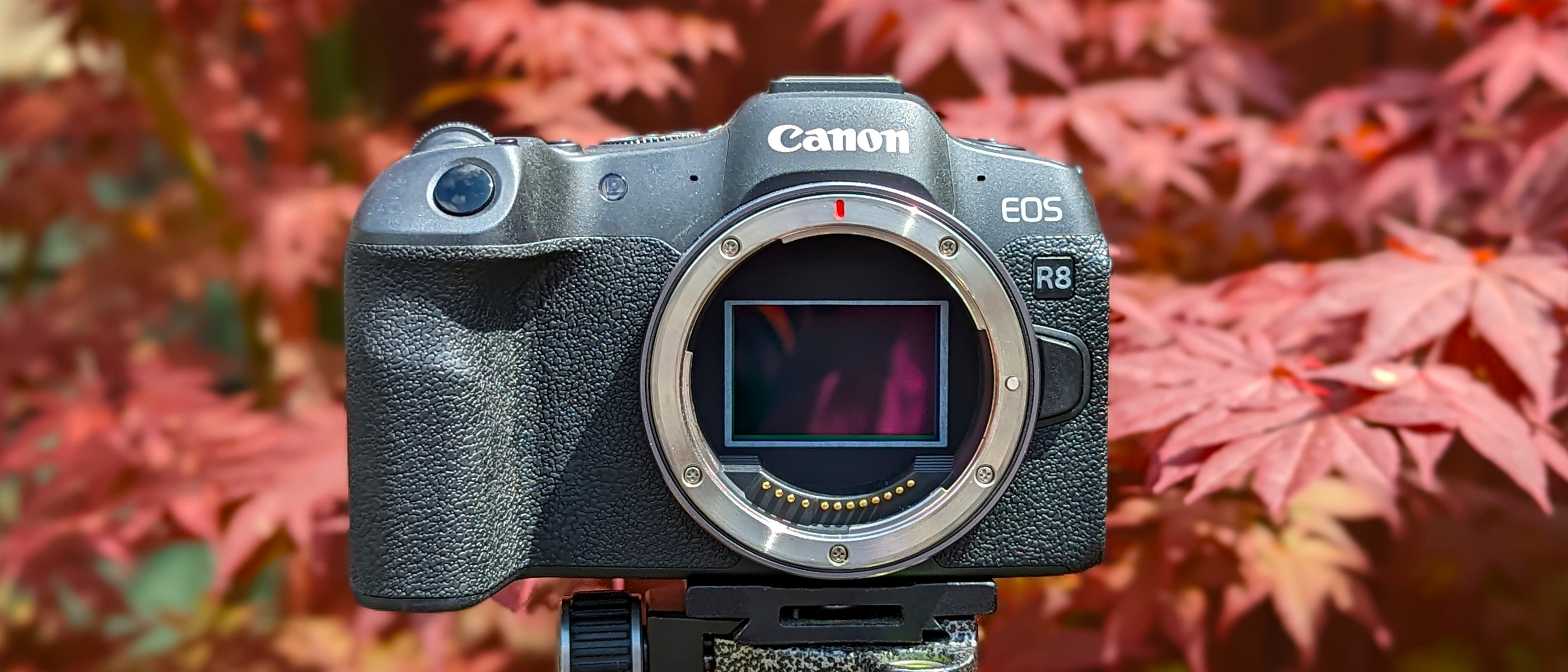Space Verdict
The second most affordable way into Canon's full-frame mirrorless ecosystem and the lightest mirrorless Canon body available, the Canon EOS R8 is a surprising victor in the astrophotography realm handling high ISO noise extremely well.
Pros
- +
Slim body is very portable
- +
Great high ISO handling for astro
- +
Premium quality Dual Pixel CMOS AF II autofocusing
- +
Lightest Canon EOS full-frame mirrorless
Cons
- -
Awkward single memory card slot
- -
Battery life is a bit disappointing
- -
Odd button placement for exposure compensation
Why you can trust Space.com
The Canon EOS R8, released in April 2023, is Canon's lightest full-frame mirrorless camera to date. Sporting a 24.2MP CMOS image sensor and a Digic X processor, this unassuming camera is surprisingly adept at all kinds of photography and even makes short work of astrophotography.
Thanks to its full-frame 35mm image sensor and excellent on-board processing there's minimal high ISO noise despite having a massive range of up to ISO 102,400 natively, expanding to 204,800 with a boost. While it's not the first camera we'd recommend for night photography we were impressed with our test results.
The R8 is perfect for anyone looking to dip a toe into Canon's full-frame mirrorless ecosystem without dropping too many dollars as long as they're not expecting anything ground-breaking spec-wise for stills photography or video.
That said, the Dual Pixel CMOS AF II autofocusing is truly outstanding and with up to 100% coverage edge-to-edge plus the ability to discern people, animals or vehicles (or automatic detection) plus even biasing left or right eye focusing and blisteringly fast results. This doesn't help much with astro, but for photographers wanting a more generalist camera that excels at astro within its limits, is really useful.
Canon EOS R8 review
Canon EOS R8: Design
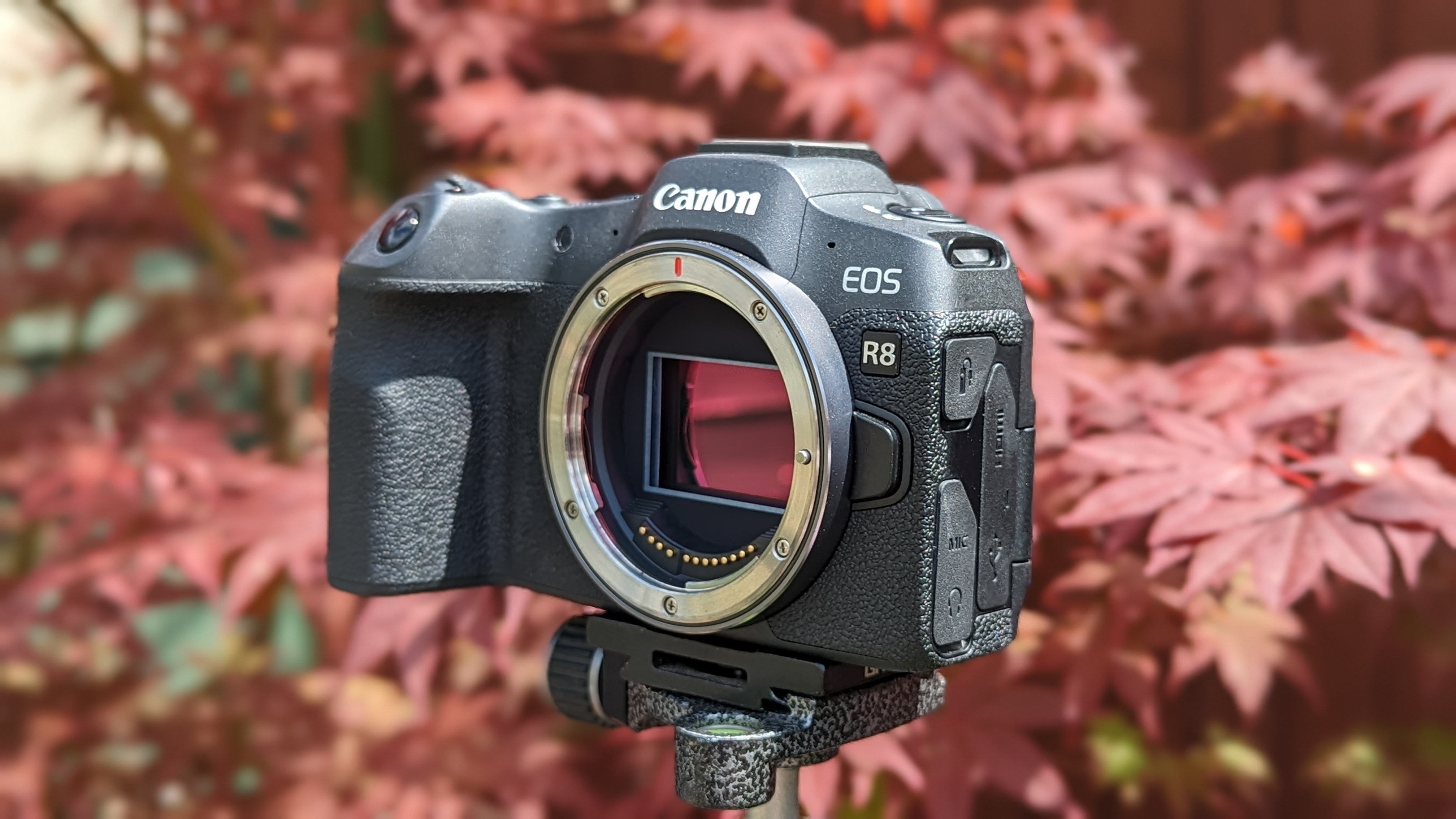
- Lightest Canon full-frame mirrorless
- Great button layout despite compact design
- Some features awkward to access
Canon highlights that the EOS R8 is the lightest Canon full-frame mirrorless camera, at the time of writing, and for good reason. At 0.91 lbs / 414g and 5.22 x 3.39 x 2.76-inches / 132.5 x 86.1 x 70.0mm for the body only, we felt this in the hand and could see its compactness from its slim profile. It is a full 0.09 lbs / 26g lighter than the previous lightest full-frame mirrorless Canon camera the Canon EOS RP.
Traveling long distances or packing for a journey is where we think the EOS R8 stands out. It's smaller than many lenses that an astrophotographer might attach to it, especially a fast ultra-wide angle zoom lens which is often large and weighty due to the premium glass construction needed to acquire sharp, color fringe-free images.
This has a knock-on effect on other camera accessories too, like being able to buy a less expensive tripod that has a lower maximum payload limit or even investing in a travel tripod rather than a full-sized one. Often astrophotographers will be setting out a telescope as well so carrying the gear from the house or car can get quite tiring when heading out to dark sky locations.
Breaking space news, the latest updates on rocket launches, skywatching events and more!

Sensor: Full-frame 24.2MP
Lens mount: Canon RF
ISO range: 100-102,400 (expandable to 204,800)
Video: 4K UHD 59.94 FPS maximum
Weight: 0.91 lbs. / 414g (body only; without battery, memory card or body cap)
Memory card slots: Single SD UHS-II
Despite the compact design, we didn't want for any more of the commonly used buttons than it featured and everything seemed in an intuitive location when using it. So much so, that when we were forced to operate it in the dark, even without a red light headlamp, we could set the aperture and shutter speed without a hitch. We weren't impressed with the method we had to use to control exposure compensation with the default layout, but more on that in our Functionality section.
Canon EOS R8: Performance
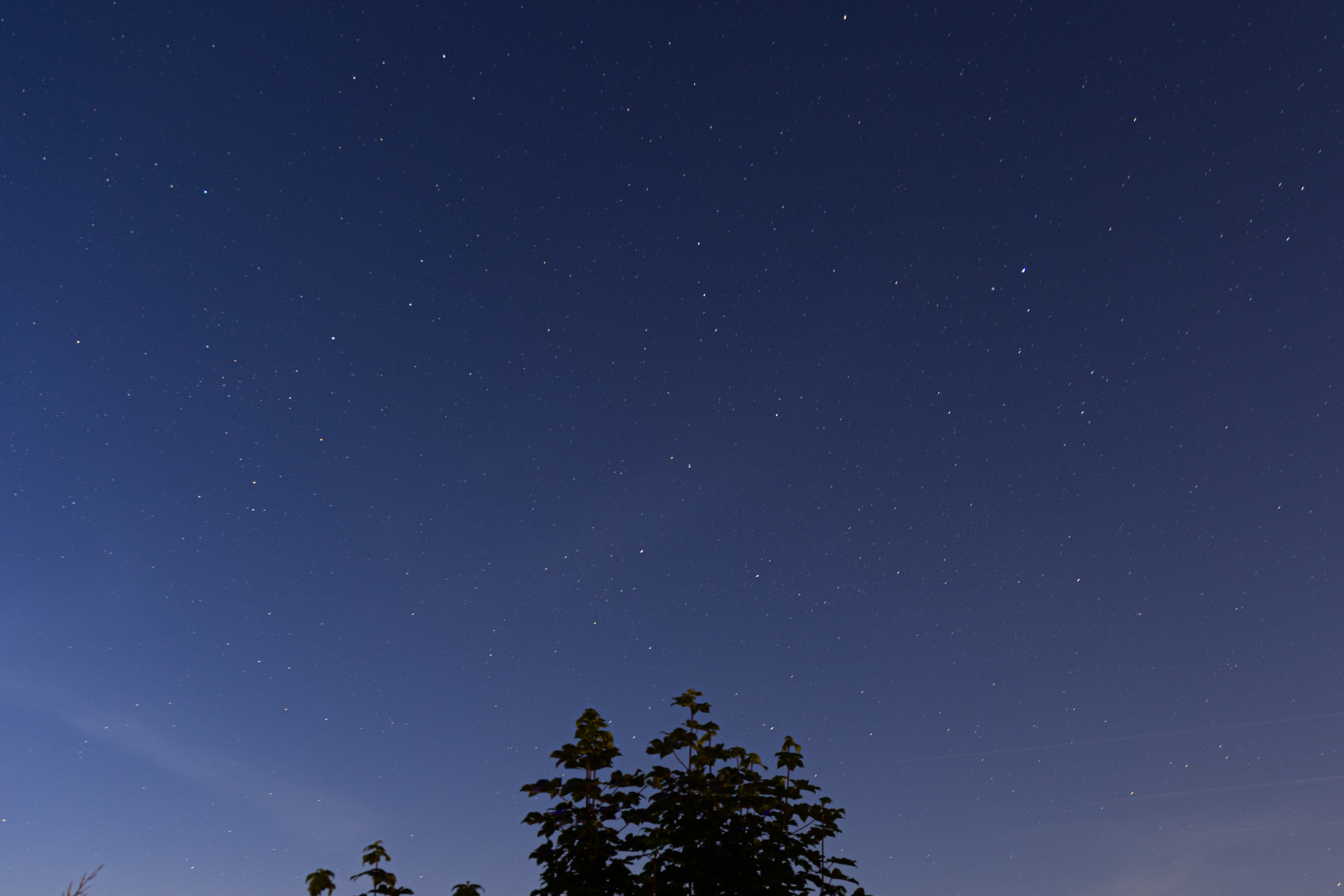

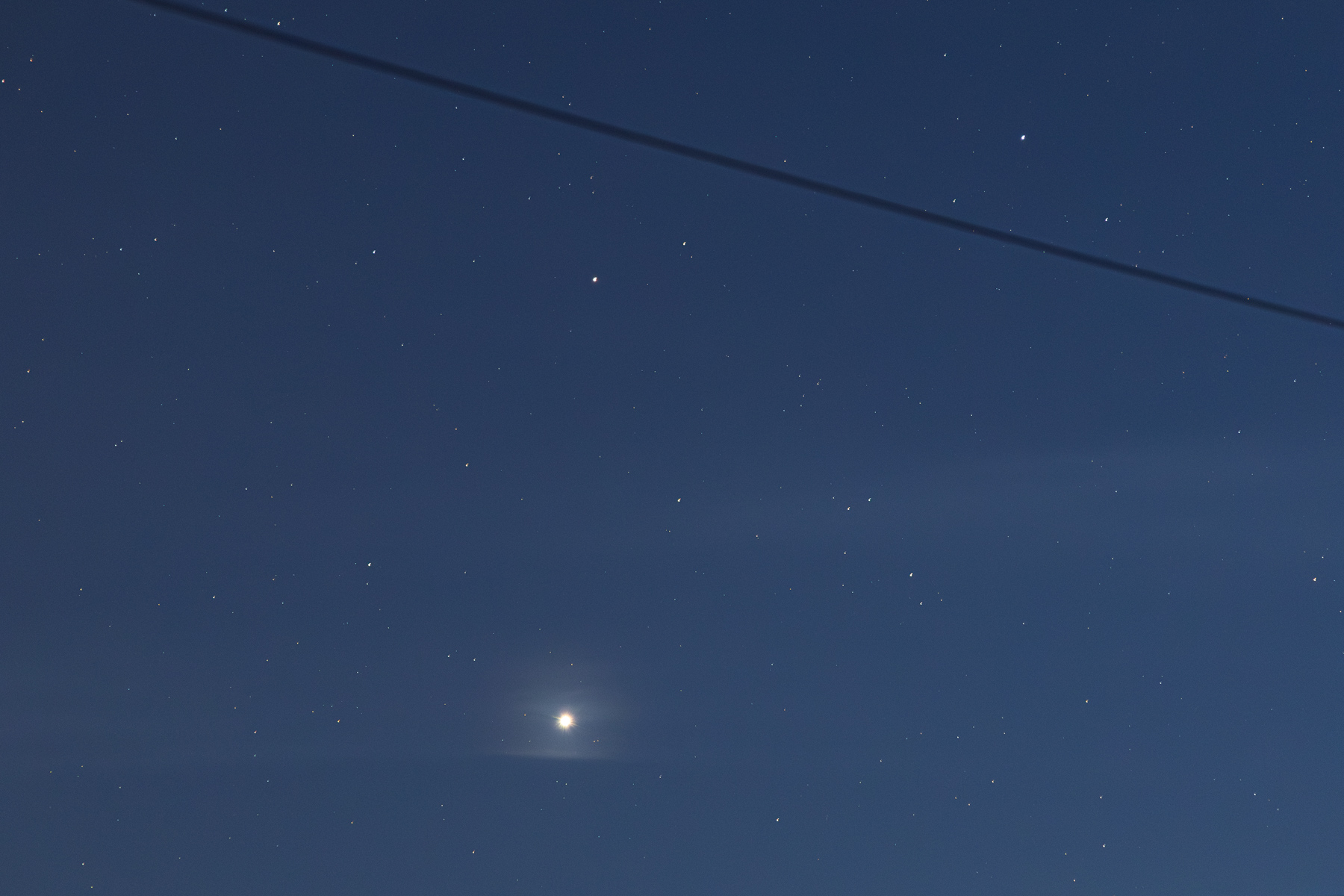
- Really impressive astro abilities for its price point
- Outstanding autofocusing system for tracking a range of subjects
- No in-body image stabilization forces users to rely on lens IS
It's known that full-frame cameras perform better at astrophotography because they are better at handling image noise brought about through the use of high ISO sensitivities. The Canon EOS R8 is nothing short of astounding in this respect. Considering it's Canon's entry-level, second-cheapest full-frame mirrorless camera we couldn't been fooled into thinking it comes in at twice its current price ($1499 at time of writing).
The standout performance of the Canon EOS R8 for us is its image noise handling when shooting wide-field astrophotography at high ISO sensitivities. What we would once have grit our teeth over when shooting in the 2000 to 3200 range, the EOS R8 comfortably handles 5000 and above. Time and again when zooming in to 100% in photo editing software we saw minimal image noise and when it was there it was uniform across the image, with very little color distortion and noise that was easily removable with the help of some Denoise processing.
The rear screen is vivid, colorful and sharp and really helped us compose images, especially at awkward shooting angles where the vari-angle touchscreen really came in handy. However, owners should be aware that we noticed that while the images seemed great on the rear screen, once we opened them up on the computer later they were a little less clear than we'd have expected.
Pixel peeping at 100% zoom we could see the limitations of the EOS R8's dynamic range. Underexposing scenes to avoid clipping highlights we boosted shadows in select areas using Adobe Lightroom and were met with disappointingly clipped shadows. This is something higher-end Canon models like the Canon EOS R5 don't exhibit.

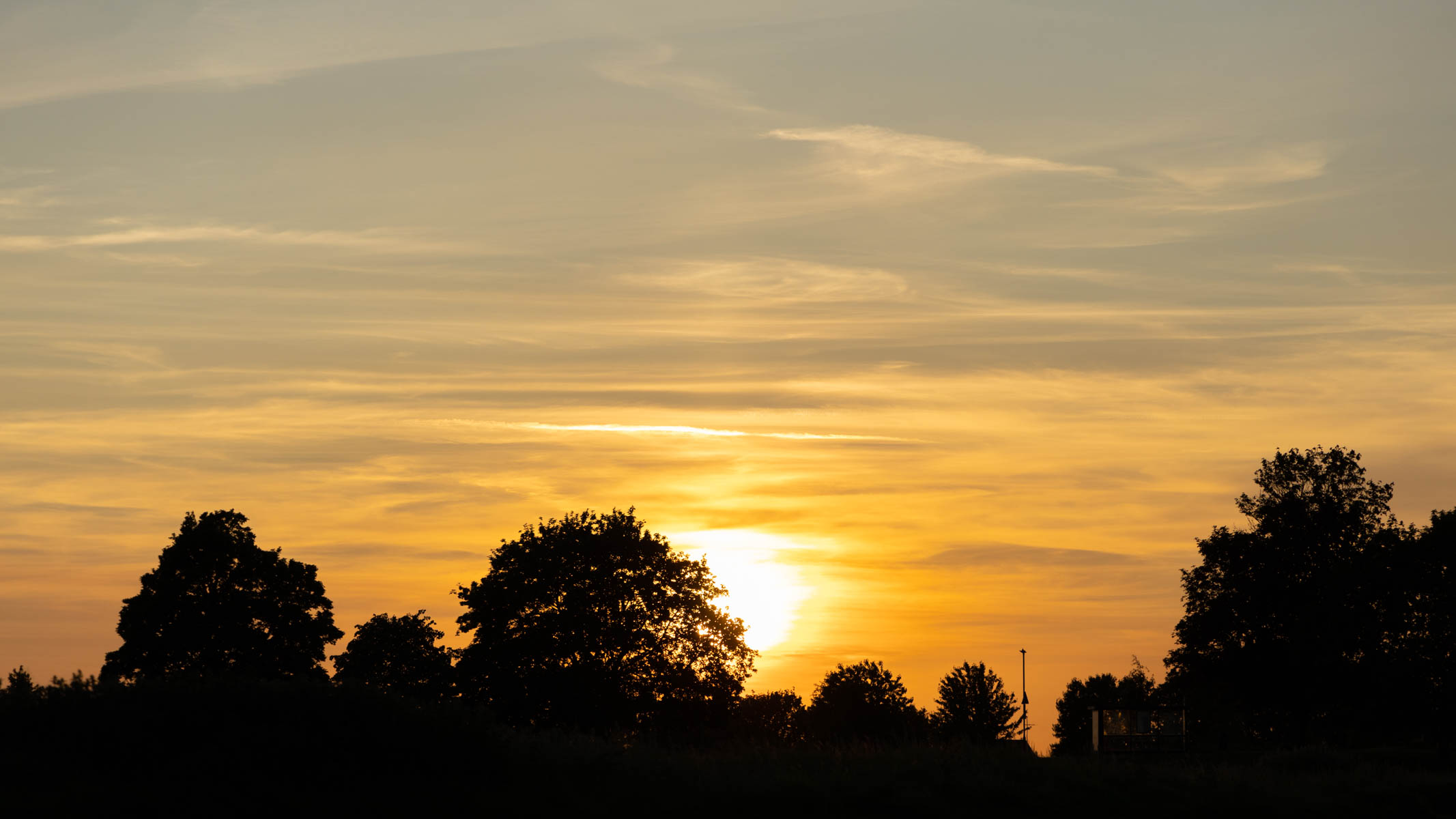
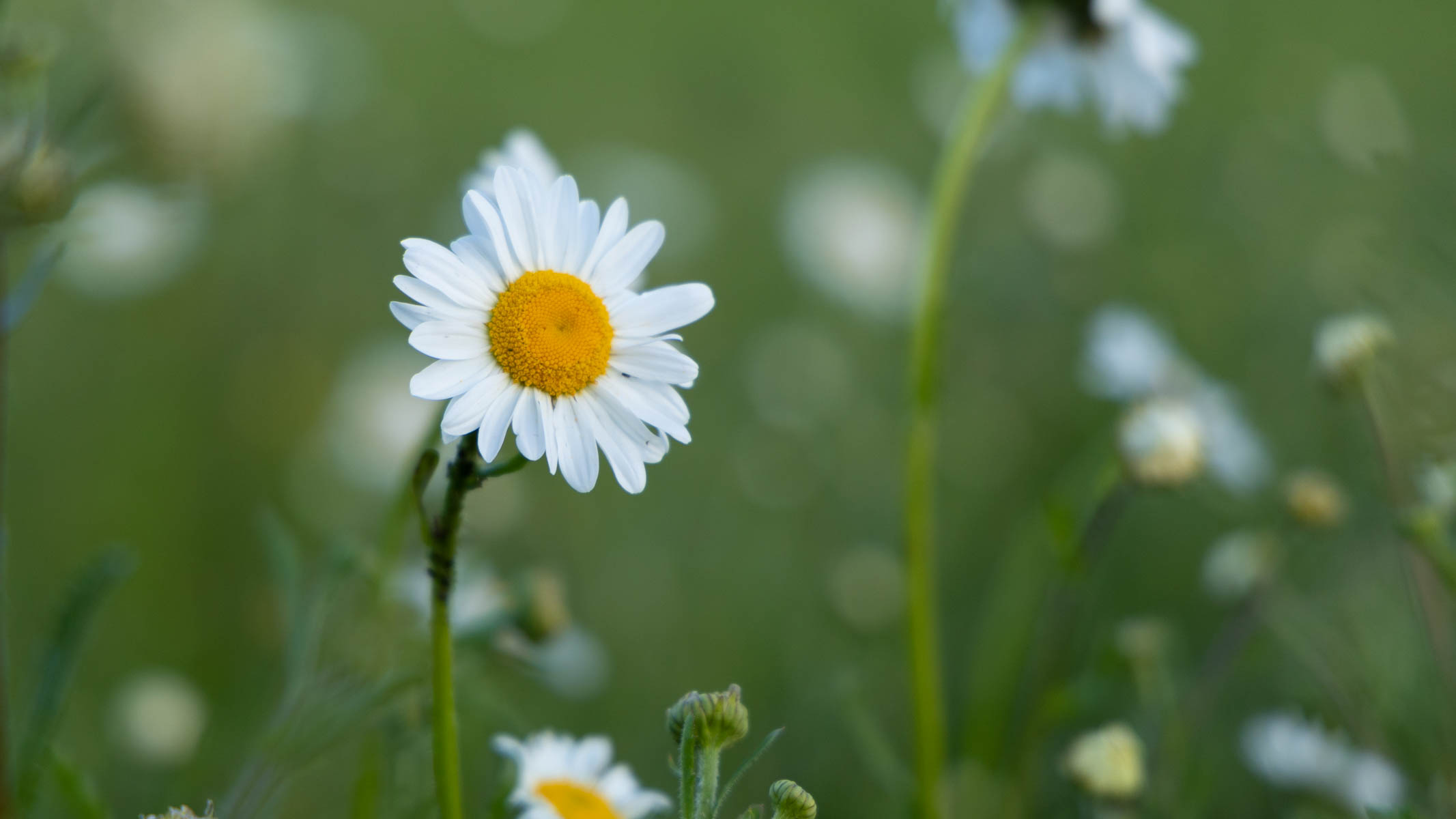
We were seriously impressed with the high ISO noise handling for a camera at this price point. We paired the EOS R8 with a Canon RF 24-105mm f/4-7.1 which isn't ideal for astrophotography but even when pushing the sensitivity up above ISO3200 the image noise was minimal. We think that using this with a fast wide zoom like the Canon RF 28-70mm f/2L USM could yield incredible results.
Image noise again wasn't a problem when viewing on the rear screen, but loading them up into Lightroom we spotted more image noise than was visible on the rear LCD screen on the camera.
Although not a useful feature for astrophotography, the EOS R8's silent electronic shutter can capture up to 40FPS stills with up to 6FPS electronic first-curtain shutter. The former is useful in situations where subjects and camera are mainly still due to the rolling shutter effect, so quiet wedding settings, group portraits and stationary wildlife shoots will benefit from this.
Canon EOS R8: Functionality
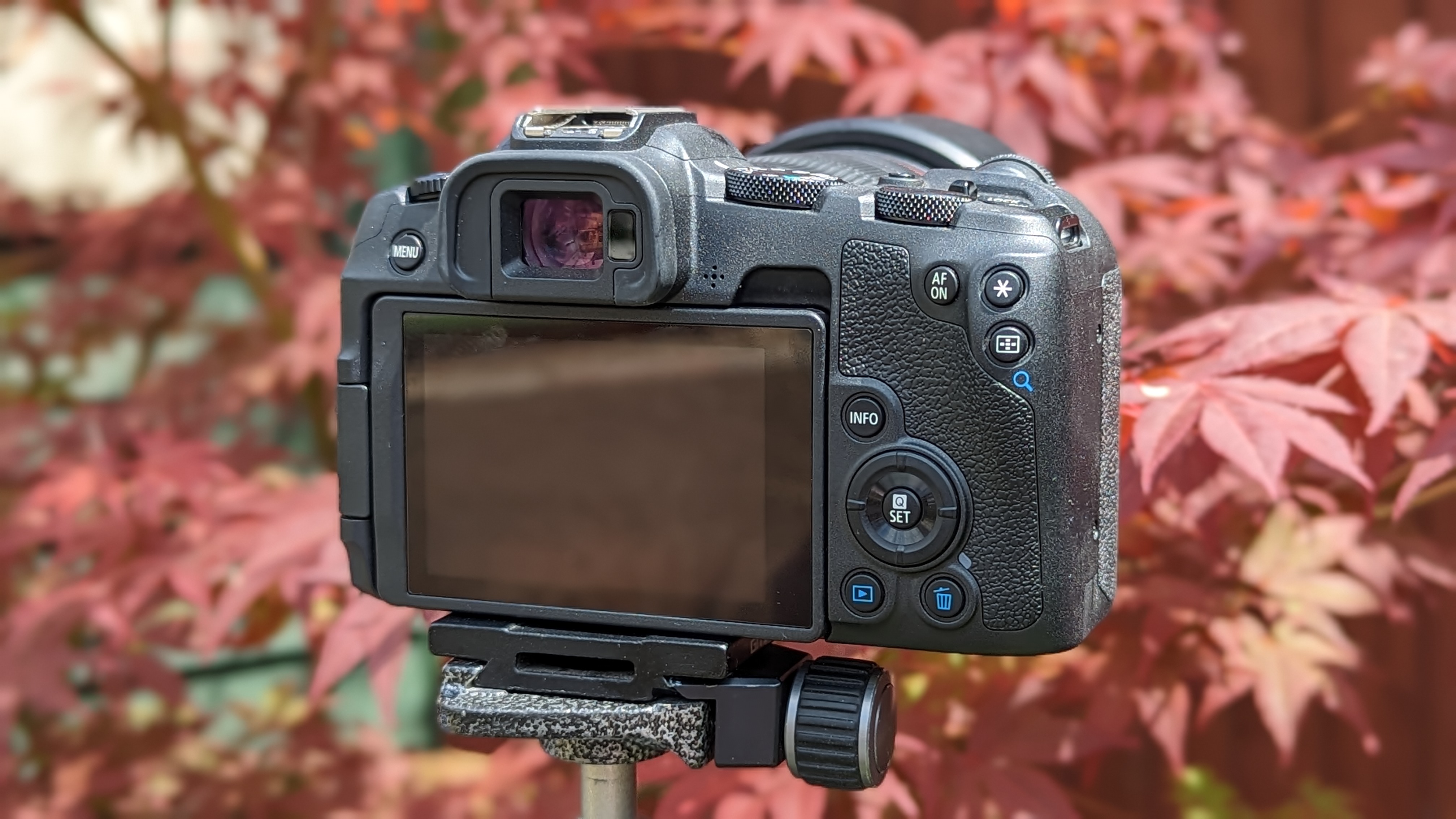
- Foolproof working straight out of the box
- Button placement perfect, with one small niggle
- Video stabilization less impressive than more expensive Canon models
After loading up a battery and a memory card it couldn't feel more intuitive to start snapping shots on the EOS R8. Command dials and back-button focusing (AF-on) plus metering buttons are all in exactly the right spot. The body is slim but the grip is deep enough to provide adequate grip when transporting it handheld, even without a neck strap.
One small niggle we had during testing was shooting in Av (Aperture value, or aperture-priority) or Tv (Time value, or shutter priority) and trying to adjust exposure compensation to brighten/darken the shot. To do this we had to hold down the asterix button on the rear right-hand side of the body and simultaneously scroll the Quick Control dial above it. This requires finger dexterity better than legendary guitarist Steve Vai and completely removes the ability to press the shutter release button at the same time.
We're aware that it's possible to set up the Lens Control Ring to adjust ISO on lenses that have one. But for us and many other photographers that prefer to use this to control other settings, this criss-crossing of the fingers on the body by default seems backwards. If it was shifted to the Main dial by default this would be much better.
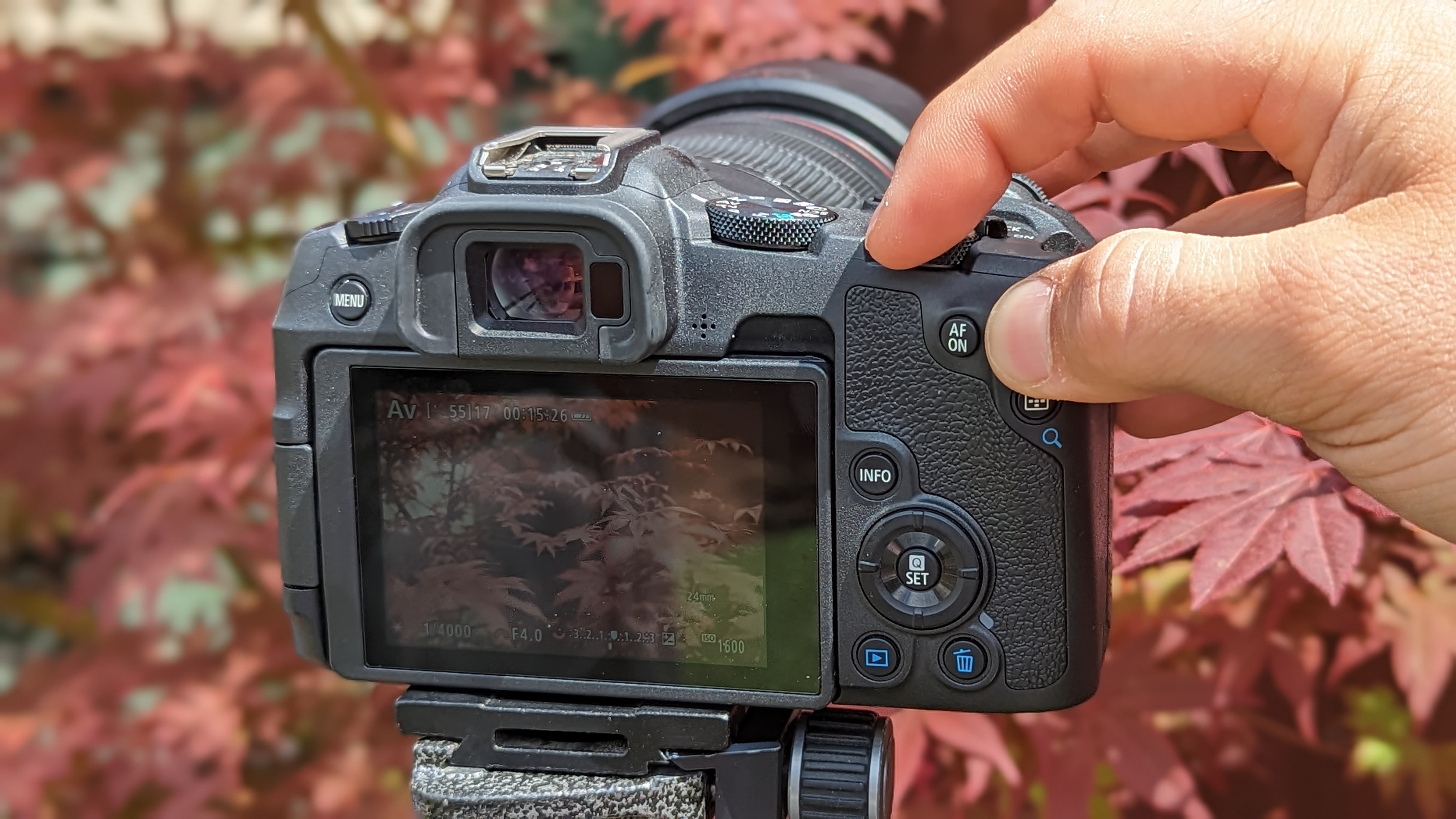
Part of the big draw with mirrorless cameras is that they feature in-body image stabilization (IBIS). This is where the camera stabilizes the scene in the camera body, rather than relying on image stabilization (IS) in the lens. Some Canon models can work in tandem combining the power of both IBIS and IS of camera and lens together. Sadly, The EOS R8 doesn't have IBIS so stills photographers that might shoot handheld in low light conditions or videographers that need extra stability will need to stock lenses that have IS built-in and perhaps also invest in stabilizing gear such as a monopod or a gimbal.
With the above said, these are small points and most beginner and hobbyist users (heck, even more intermediate shooters) will probably not even recognize this as being a problem, at all. It is a very solid camera, super light and inordinately useful and affordable.
Should you buy the Canon EOS R8?
If you're looking to get into the full-frame mirrorless game and want to shoot Canon without breaking the bank, the Canon EOS R8 is the camera to beat. For our money, we wouldn't go with anything else from Canon's line-up for shooting astro on a budget. Because it's full-frame you can take advantage of the entire field of view of those full-frame lenses as well. The lack of in-body image stabilization shouldn't bother astrophotographers who will always be using a tripod anyway, but if purchasing as a generalist camera to shoot during the daytime too, this only makes sense if budget is restricted. Saving that money is a great benefit because you can drop some serious dollars on big, fast glass, like the Canon RF 28-70mm f/2L USM or Canon RF 24-70mm f/2.8L IS USM and then upgrade your EOS R8 to something beefier like the EOS R5 in the future without having to reinvest in better lenses.
If the Canon EOS R8 isn't for you
This is a full-frame camera that shoots 40FPS (electronic shutter) captures 4K 60FPS video and is stunning at astrophotography. So what's not to like? Well, nothing in and of itself but there are some users that will want for more out of their camera. To start with the EOS R8 has only one memory card slot and its 40FPS is susceptible to rolling shutter so it's useless for things like sports and action. Instead, we'd recommend the Canon EOS R3 which is built for professional use and is much better adept at sports shooting at 30FPS (mechanical shutter) with no buffering issues to speak of.
Replace the below with relevant buying guides/deals hubs on our site:
Best binoculars
Best binocular deals
Best nightvision binoculars
Best monocular
Best binoculars for kids
Best compact binoculars
However, for astrophotography on a mirrorless camera we think the Sony A7R IVA is the overall winner at the moment. Top of our Best cameras for astrophotography guide (aside from two dedicated astro cams) and its non-A sibling the Sony A7R IV in the number one spot on our Best cameras for photos and videos page, we were impressed enough to give it four and a half out of five stars. Deftly detailed with 61MP stills resolution and an incredible autofocusing system it does almost everything excellently. Though, video shooters be aware it tops out at 4K video recording.

Jase Parnell-Brookes is the Managing Editor for e-commerce for Space and Live Science. Previously the Channel Editor for Cameras and Skywatching at Space, Jase has been an editor and contributing expert across a wide range of publications since 2010. Based in the UK, they are also an award-winning photographer and educator winning the Gold Prize award in the Nikon Photo Contest 2018/19 and named Digital Photographer of the Year in 2014. After completing their Masters degree in 2011 and qualifying as a teacher in 2012, Jase has spent the last two decades studying and working in photography and publishing in multiple areas, and specializes in low light optics and camera systems.
